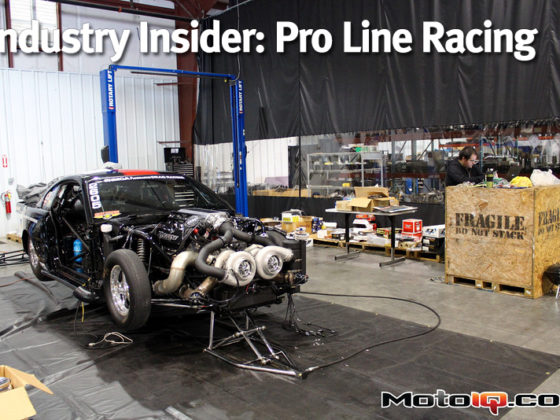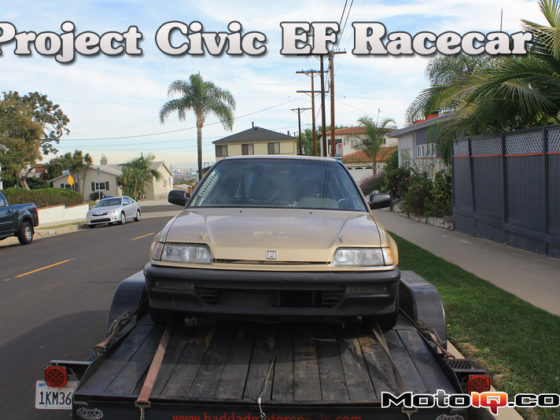,
 The engine bay of the 2015 Mustang GT looks very similar to the outgoing S197. Despite a familiar but massaged 5.0L V8, there are some distinct improvements of the 2015. The ABS module is moved rearward in the engine bay to below the brake master cylinder, slightly reducing the brake line length and improving the cars weight distribution. The main upper chassis angles inward toward the 2015’s narrower nose and the strut tower brace has two additional braces that connect the strut towers to the firewall. The airbox is still fed by fresh air from the front of the car but retains the induction tube to feed noise to the cabin of the car. Unfortunately there is still a hood prop rod and the battery remains in the engine bay. Due to the Mustang’s improved weight distribution, relocating it to the trunk would alone probably yield a 50/50 weight distribution. The pill-shaped radiator overflow tank and hood struts to replace the rod will probably be a popular component to replace in the aftermarket.
The engine bay of the 2015 Mustang GT looks very similar to the outgoing S197. Despite a familiar but massaged 5.0L V8, there are some distinct improvements of the 2015. The ABS module is moved rearward in the engine bay to below the brake master cylinder, slightly reducing the brake line length and improving the cars weight distribution. The main upper chassis angles inward toward the 2015’s narrower nose and the strut tower brace has two additional braces that connect the strut towers to the firewall. The airbox is still fed by fresh air from the front of the car but retains the induction tube to feed noise to the cabin of the car. Unfortunately there is still a hood prop rod and the battery remains in the engine bay. Due to the Mustang’s improved weight distribution, relocating it to the trunk would alone probably yield a 50/50 weight distribution. The pill-shaped radiator overflow tank and hood struts to replace the rod will probably be a popular component to replace in the aftermarket.One of the biggest complaints I’ve read about the car is that it is not very loud or sporty sounding, I have to agree. The pipe that connects the intake to the cabin does give an induction-dominant sound which is as loud with the windows rolled down as it is with them rolled up. You really don’t hear any exhaust noise coming from the rear of the car. It’s possible the car is so quiet to meet increasingly stringent sound limits that all manufacturers have to abide by (thank you government). If you think about it, cars that sound really good are often more expensive and utilize variable exhaust valves to make them loud, which would allow them to get around this hurdle. Without knowing more on these restrictions I can’t really complain too much, but I foresee cat-back exhaust being the most common modification for the GT.
 From the driver’s seat, the long and flat hood gives the car more of a Viper feeling, especially when parking in tight places. The curvaceous hood gives the car some character and is nice to peer over compared to newer BMWs which just seem to end and disappear at the windshield.
From the driver’s seat, the long and flat hood gives the car more of a Viper feeling, especially when parking in tight places. The curvaceous hood gives the car some character and is nice to peer over compared to newer BMWs which just seem to end and disappear at the windshield.
THE DRIVE:
In a straight line, the Mustang hooks up. Crawl off the line from a stop and punch it and the car leaps forward through first gear without spinning the tires. Even when powering out of a corner unless provoked, the Mustang’s power-down grip remains very good. Straight line speed and feel is very familiar for Mustang owners and with a revised shift linkage for the 6-speed MT-82 transmission, the car shifts a little better. The car feels and behaves like a Mustang in this regard so current Mustang owners will feel right at home.
Now the biggest criticism in the past for the Mustang was its solid axle’s performance over bumps. That problem is completely solved with the new integral link rear suspension. I’ve never really opposed the solid axle since it does have some strengths as well as weaknesses compared to an independent rear suspension, and while I admit the weight of the solid axle was noticeable with stock V6 and GT suspensions, a set of coilovers or BOSS 302 suspension really mask these negatives for both bumpy roads and on track performance. I’m not sure if many journalists just spew out the same critiques that they read from their peers, but a BOSS or GT with coilovers is a very impressive handling package that does not get very upset from bumps. But I digress, the new GT handles bumps and dips with greatly reduced unsprung weight and brings the Mustang into the 21st century.
The electronically assisted rack can transform from an overly light, numb ‘comfort’ mode which my mother would prefer to “normal” and a slightly heavier “sport” setting. While everyone criticizes electric steering on all manufacturers including the Germans, I’m not sure I would make a huge deal out of it. No one is demanding for the ‘connected’ steering feel of a non-assisted NSX, Esprit, or Alfa 4C which all do give you a more direct feeling than an assisted rack, and hydraulic racks vary greatly from manufactuer to manufacturer. I like how you can change the steering characteristics of an electric rack from a click of a button and everyone will continue to perfect them each year.
 Gary Yeomans Ford Lincoln is located at 1420 N Tomoka Farms Rd, Daytona Beach, FL 32124. They have been very accommodating with this test drive and purchases in the past. If you are in the South Florida area, stop by and check out their large facility.
Gary Yeomans Ford Lincoln is located at 1420 N Tomoka Farms Rd, Daytona Beach, FL 32124. They have been very accommodating with this test drive and purchases in the past. If you are in the South Florida area, stop by and check out their large facility.The suspension in the Performance Pack does feel slightly ‘sportier’ than the GT, and you can feel more nooks and bumps in the road. The stiffer high speed damping does not crash over bumps but it would give me the expectation that the car would also have more low speed damping to make the car more responsive and on its feet, but it didn’t have quite enough for me. The Performance Package was not as harsh as say an M3 in ‘sport’ suspension mode but it also flopped a bit more in transitions than the M3, however it is substantially better and more nimble than the outgoing car.
There is the typical safe entry understeer for the masses but the car gets down to an apex better than I remember the old S197 being able to, which was the biggest weakness for the older car. Through the middle of the corner, the car feels a little more on its feet over bumps which you would expect from an IRS rear suspension, and just like all Mustangs should and BMW’s are known for: the new GT has tons of power-on oversteer happiness thanks to its big torquey V8. The car transitions into a nice powerslide smoothly and it’s easy to hang the rear end out while the car seems to squat down on the outside rear a bit.
The brakes are responsive with good initial bite and braking power to stop the car from triple digits. It’s hard to comment how they will hold up on the track, but from the size alone, it’s a significant improvement. Hit the middle pedal hard and I’m happy to report the car has significantly less brake dive. Where the S197 seemed to hike the rear end up in the air and pin the nose to the ground like a motorcycle ‘stoppie’, the new S550 has a much flatter and better controlled body motion with a lot more anti-dive and anti-squat than the outgoing car. The overall platform tracks flatter with less dive, squat, and body roll than the S197, which is what you expect from a sports car.
I feel the Performance Package is worth it for any owner who is a spirited driver, if not for anything but the rear end and brakes alone. The Torsen LSD and acceleration-improving 3.73 final drive is far better than the stock Traction-Lok unit and final drive ratio, especially if you plan on driving the car hard. The huge 6-piston calipers and 15” rotors negate any need for better brakes for track use as long as you have a proper pad. While the suspension would be better replaced with something sportier, it would probably cost more in the long run trying to piece together the drivetrain and brake components than just selecting the PP option and upgrading the suspension.




1 comment
Has anyone tested aftermarket front sub frame bracing for the s 550? I see 2 and 4 bolt configurations. BMR and Steeda have products but I cannot find any testing of what if anything these braces do. The ease of instillation makes me skeptical. It seems like they might work but when I see a lot of marketing and results demonstrated I pause. Please advise